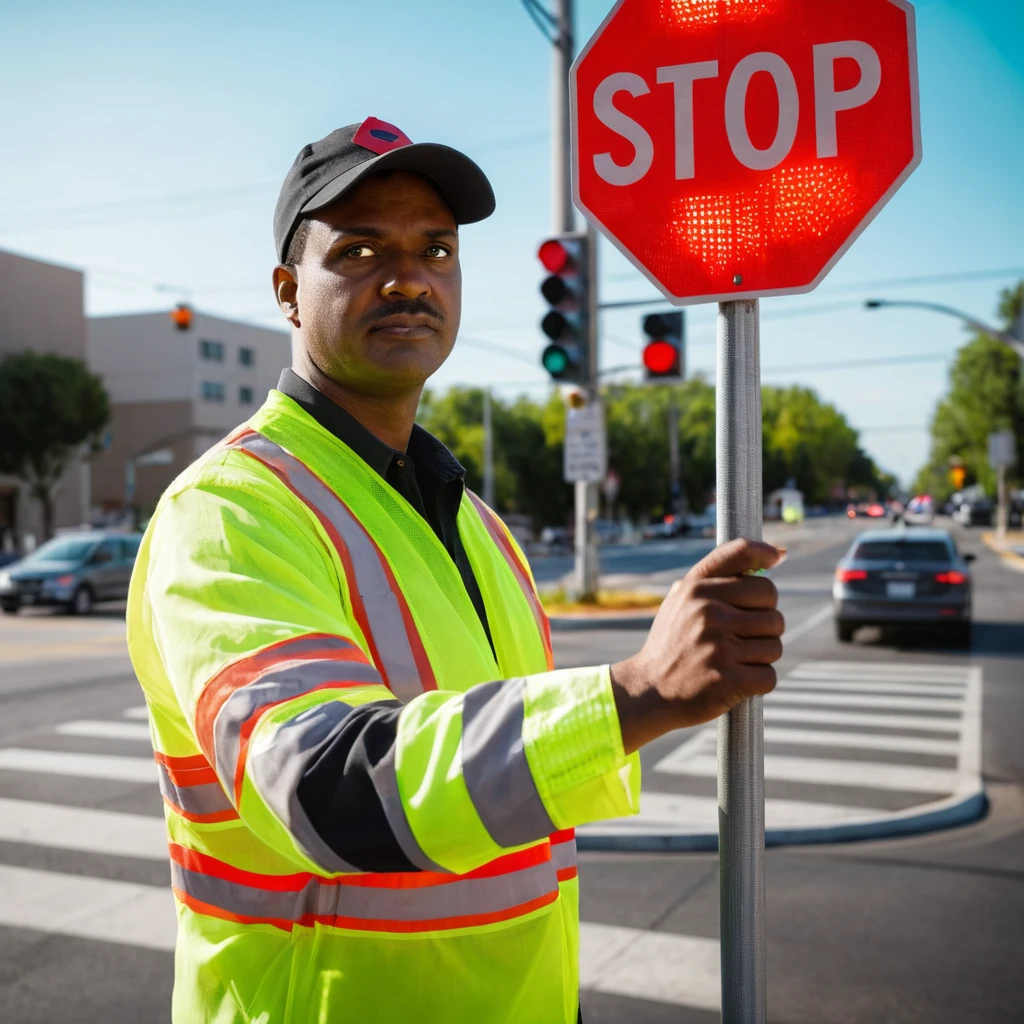Ontario Traffic Manual Book 7
Navigating road work can be a frustrating experience for drivers, but the presence of Traffic Control Persons (TCPs) is crucial for ensuring the safety of both motorists and construction crews. In Ontario, the guidelines for temporary traffic control are meticulously laid out in the Ontario Traffic Manual (OTM) Book 7. This comprehensive manual dictates everything from signage placement to the responsibilities of TCPs. One particularly important aspect addressed in OTM Book 7 is the specific distance a TCP must maintain from signalized intersections. Did you know that there’s a mandatory limit?

The 30-Metre Exclusion Zone
According to the latest edition of the Ontario Traffic Manual (OTM) Book 7, specifically the April 2022 Office Edition, a Traffic Control Person must never impact the operation of traffic control signals. To ensure this, the manual explicitly states that TCPs are prohibited from being positioned or operating within 30 metres of the stop bar on any approach to an intersection where traffic control signals are in use, whether temporary or permanent. This regulation might seem like a small detail, but it plays a significant role in maintaining order and preventing potential hazards on our roads.
Preventing Driver Confusion
Why is this 30-metre rule so important? The primary reason is to avoid confusion for drivers. When approaching a signalized intersection, drivers are primarily focused on the traffic lights. If a TCP were stationed too close to the intersection, their signals could be misinterpreted or conflict with the signals from the traffic lights. This could lead to hesitation, sudden stops, or incorrect maneuvers, significantly increasing the risk of accidents. By establishing a clear 30-metre buffer zone, the OTM ensures that drivers receive unambiguous instructions, either from the automated signals or from a TCP operating safely outside the immediate intersection area.
Enhancing TCP Safety
Furthermore, this distance limitation also contributes to the safety of the TCP. Intersections, even those with traffic signals, can be dynamic and potentially dangerous environments. By keeping TCPs at a safe distance from the immediate flow of traffic within the intersection, the risk of them being struck by turning vehicles or other unexpected movements is reduced. This allows TCPs to focus on managing traffic within the work zone leading up to the intersection without being directly exposed to the complexities of the signalized area itself.
Authority at Signalized Intersections
It’s also important to understand that OTM Book 7 clarifies the authority at signalized intersections. The manual emphasizes that only Police Officers have the jurisdiction to directly control traffic at intersections where signals are operating. This reinforces the idea that TCPs are responsible for managing traffic flow within the work zone, while the signals (or a police officer) manage the traffic within the intersection itself.
The Importance of Expert Planning
Properly planning and implementing traffic control measures in and around signalized intersections requires a thorough understanding of OTM Book 7 and its regulations. Ensuring that TCPs are positioned correctly, adhering to the 30-metre rule, and coordinating effectively with traffic signals are all critical components of a safe and efficient work zone. This is where expert knowledge and experience become invaluable.
Resources
You can find the Ontario Traffic Manual – Book 7 at its original location here
Or, find the entire Ontario Traffic Manual posted here on our site organized a bit more user friendly
Contact Aceis Group for Assistance
Are you planning road work or any project that requires temporary traffic control near signalized intersections? Ensuring compliance with OTM Book 7 is not just a matter of following guidelines; it’s about prioritizing the safety of everyone on the road. At Aceis Group, we specialize in providing comprehensive traffic control person planning and services. Our team of experts has an in-depth understanding of the Ontario Traffic Manual and can ensure that your project adheres to all regulations, including the crucial 30-metre distance from stop lights. Contact Aceis Group today to discuss your traffic control needs and let us help you create a safe and efficient work zone.


